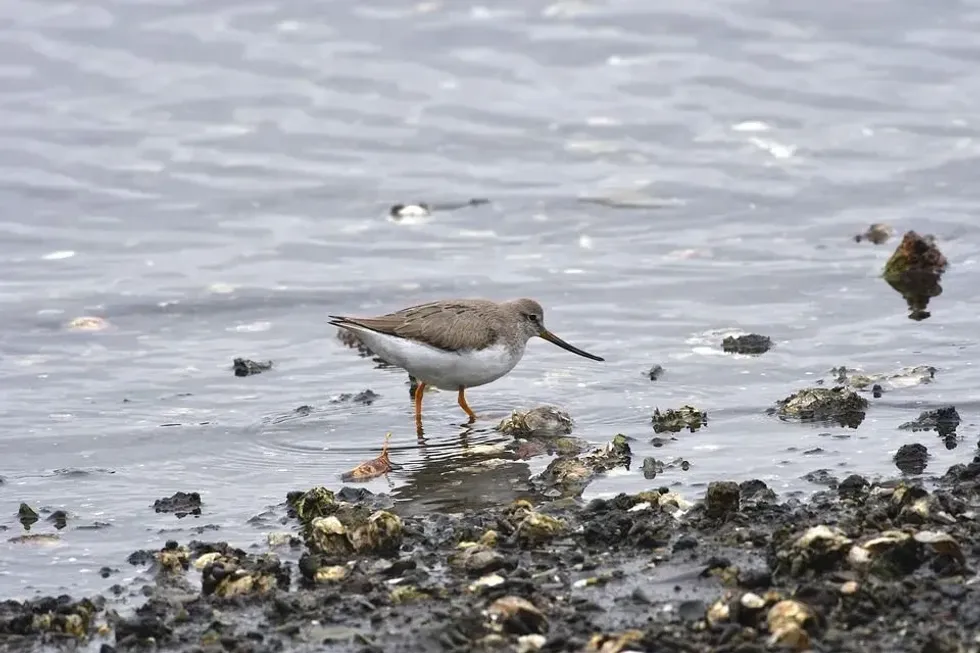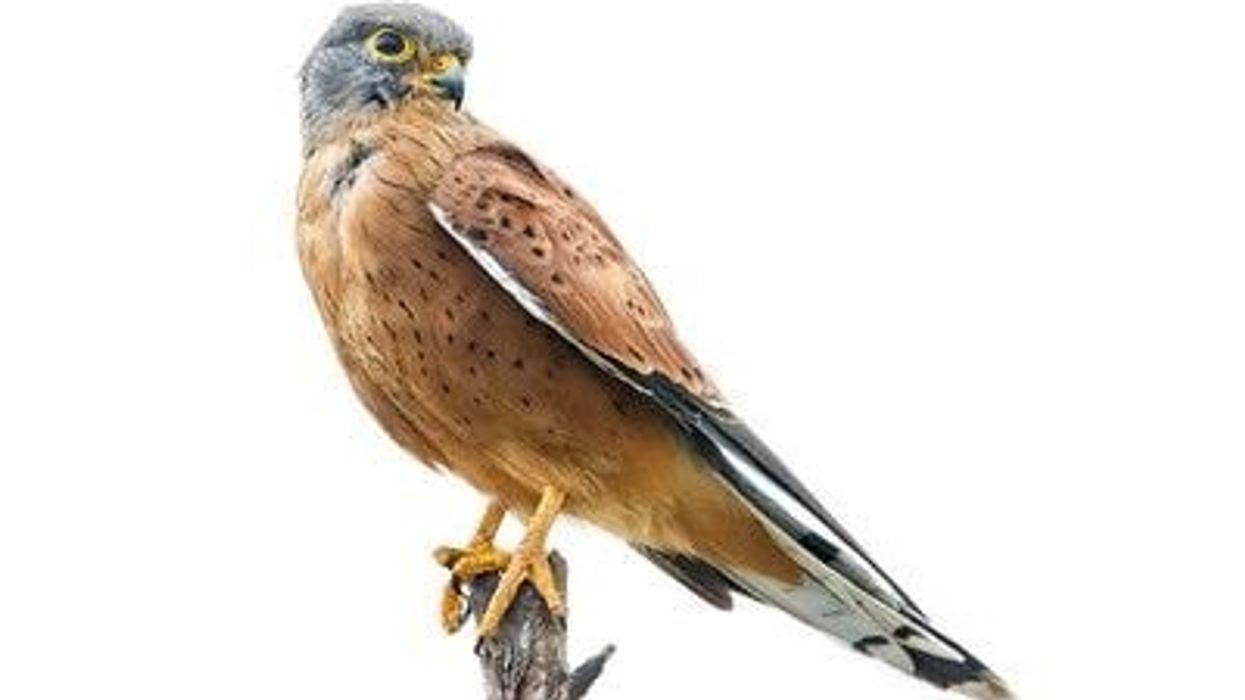The Terek sandpiper (Xenus cinereus) is a small migratory wader species that can be found in the Palearctic region. This is the only species that belongs to the genus Xenus. The Terek sandpiper was named after the Terek River that flows into the Caspian Sea, as it was first sighted there.
The Terek sandpiper bird is a monotypic species and it belongs to the family of curlews and sandpipers, the Charadriidae.
The flight range is from north to south areas of Finland, Belarus, Ukraine, Kazakhstan, coastal regions of southeast Africa, Madagascar, the Arabian peninsula, the Indian subcontinent, southeast Asia, and Australia. These Terek sandpiper bird species are migratory birds and the breeding populations occur in Arctic tundra and sub-Arctic northern Russia, Finland, Kazakhstan, and Ukraine.
These sandpipers leave the breeding grounds by the end of July and migrate to coastal regions of Africa, the Indian subcontinent, the Arabian peninsula, southeast Asia, and Australia for wintering.
Scroll down to read about the Terek sandpiper's life span, what they feed on, their habitat, and other exciting details! For more relatable content, check out these spotted sandpiper facts and least sandpiper facts for kids.
Terek Sandpiper Interesting Facts
What type of animal is a Terek sandpiper?
The Terek sandpiper (Xenus cinereus) is a small migratory wader species and is closely related to the spotted sandpiper and the common sandpiper.
What class of animal does a Terek sandpiper belong to?
Terek sandpipers belong to the Aves class and the order Charadriiformes.
How many Terek sandpipers are there in the world?
The global population size of Terek sandpipers is estimated to be about 160,000 - 1,200,000 individual birds as reported by Wetlands International in the year 2015. The population of these species has been seen to be declining but they are still found in abundance and are therefore in the Least Concern category.
Where does a Terek sandpiper live?
The Terek sandpiper distribution can be found in the areas of Finland, Belarus, Ukraine, Kazakhstan, coastal regions of southeast Africa, Madagascar, the Arabian peninsula, the Indian subcontinent, southeast Asia, and Australia.
These breeds are migratory birds and the breeding population range is in Arctic tundra and sub-Arctic northern Russia, Finland, Kazakhstan, and Ukraine. These sandpipers leave the breeding grounds by the end of July and migrate to coastal regions of Africa, the Indian subcontinent, the Arabian peninsula, south-east Asia, and Australia for wintering.
These birds fly from the extreme northern areas to the south on the map throughout the years.
What is a Terek sandpiper's habitat?
The Terek sandpiper bird doesn't depend on dense forests and mostly habitat areas of boreal forests, subarctic shrublands, mangrove forests, tundra wetlands, freshwater lakes, marine lakes, shallow water, estuaries, marshes, and intertidal mudflats.
Who does Terek sandpiper live with?
Sandpiper birds tend to stay and prey in flocks, but the Terek sandpiper is a solitary animal and can be found alone at the banks of shady creeks. Only during the breeding season, they can be seen in flocks.
How long does a Terek sandpiper live?
The Terek sandpiper can live up to almost 16 years.
How do they reproduce?
The breeding season starts in the month of May and goes on till August. They are monogamous in nature and breed in small colonies.
They breed in open flat grounds around the water bodies with lesser vegetation. The nest lined with grass and plant matter is a shallow depression on the ground. The breeding adults comes together during the breeding season.
The mother lays two to five eggs and incubates them in the nest. The chicks hatch out from the eggs after 24 days of incubation and fledge after 15 days. During the period of incubation as well as till the chick can fly, both adults take care of the newborn.
What is their conservation status?
According to the IUCN Red List, the Terek sandpiper is of Least Concern, as they can be found in abundance all over the world but their numbers have been decreasing lately due to pollution of water bodies which is an inconvenience as these species primarily feeds on animals that live in water.
Terek Sandpiper Fun Facts
What does Terek sandpiper look like?
Terek sandpipers have pale grayish-brown plumage on the upperparts, head, and breast. There is dark brown streaking on the head, neck, throat, and breast and the underparts are white. They have a long upcurved bill and this long upcurved bill is dirty orange-colored at the base.
The irises are brownish-black and they also have a white eye-ring. The legs and feet are bright orange or greenish-yellow. The wings are gray and brown as well with streaks of dark brown color.
How cute are they?
With their tiny movements and small stature, the sandpiper bird is perceived as quite likable from their description. They don't attack as well and bird lovers can have an affinity for these migratory birds. Being the birds of the world that fly all over the world, they can be easily sighted and are adored by bird enthusiasts.
How do they communicate?
This sandpiper breed lets out a long whistle-like twittering sound and it calls out loud when it tries to communicate with other birds. The calls of the sandpiper bird are not as loud as the cockatoo calls but are loud enough that the calls can be heard from a distance.
How big is a Terek sandpiper?
Terek sandpipers can be almost 8.7-9.8 in (22-25 cm) big. This makes it almost two times smaller than the Arctic tern which is about 11-16.1 in (28-41 cm) big.
How fast can a Terek sandpiper fly?
There is no estimated flight speed of these species, but the little stints with gray wings are migratory birds which makes them quite able to fly faster than most birds.
How much does a Terek sandpiper weigh?
As per the description, this bird species weight range is almost 1.8-4.4 oz (50-126 g).
What are the male and female names of the species?
There are no specific names assigned to the male or female Terek sandpiper birds and are termed as the Terek sandpiper or Xenus cinereus after they become adults.
What would you call a baby Terek sandpiper?
The newborn is not specifically called by any specific name but is called either hatchling or chick, till it becomes a breeding adult and leaves nest. Non-breeding sandpipers and several one-year-old sub-adults remain back in the wintering grounds after migration.
What do they eat?
The primary diet of the Terek sandpiper species consists mainly of invertebrates. They feed on insects, larval insects, water beetles, flies, crustaceans like green crabs, mollusks, and arachnids. They also feed on seeds which can be seen as a secondary diet choice. They can catch insects mid-flight and feed on them.
Are they dangerous?
These birds don't attack anyone and have no means of defending themselves with their small size. They are completely harmless and tend to stay away from bigger birds in order to be safe.
Would they make a good pet?
These breeds are migratory birds, which means they move from one region to another during different seasons and if they are kept as pets, they won't be able to migrate every season, which can take a toll on this species.
Did you know...
This breed catches the crabs on the ground by running after them while foraging for food. The birds also tend to poke and pull out worms from the ground to feed with their upturned bill.
How did the sandpiper get its name?
The Terek sandpiper bird was named after the Terek River that flows into the Caspian Sea, as it was first sighted there.
How far do sandpipers migrate?
The sandpiper bird leaves the breeding grounds by the end of July and migrates to coastal regions of Africa, the Indian subcontinent, the Arabian peninsula, southeast Asia and Australia for wintering. The return to the breeding grounds takes place during March and April. Non-breeding sandpipers and several one-year-old sub-adults remain back in the wintering grounds.
Here at Kidadl, we have carefully created lots of interesting family-friendly animal facts for everyone to discover! For more relatable content, check out these birds of paradise fun facts and royal penguin interesting facts pages.
You can even occupy yourself at home by coloring in one of our free printable types of birds coloring pages.









